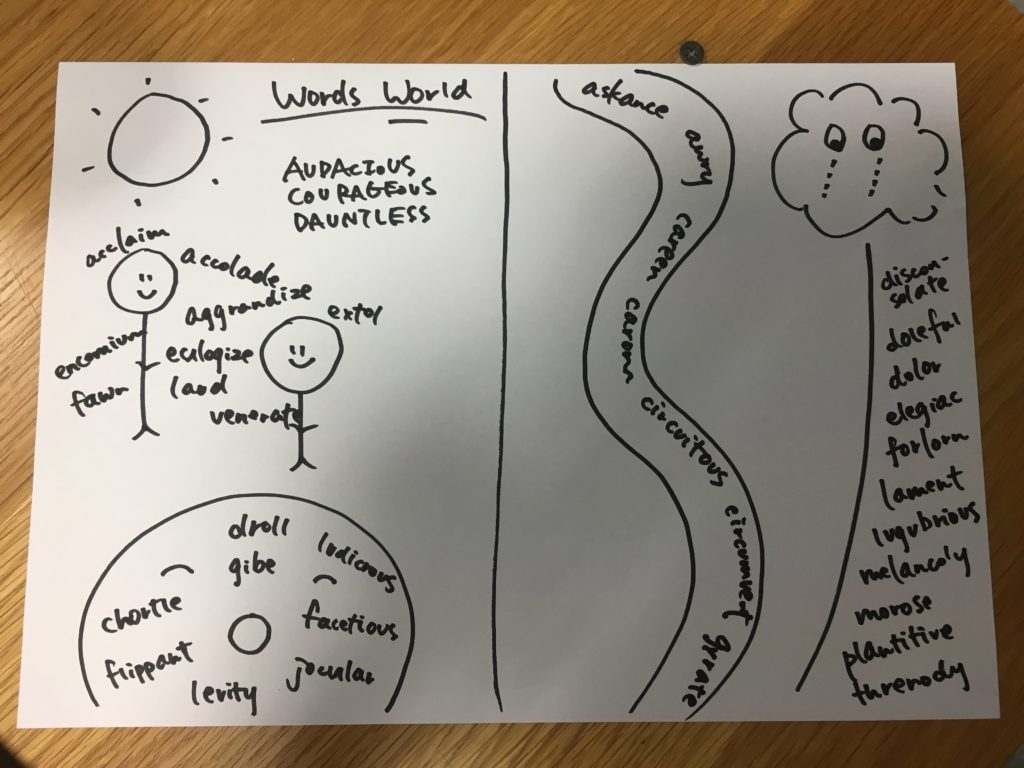For my first project, I would like to create a “Word World,” which is an environment made up of words. I was recently reading a book, which talked about using various senses to memorize new vocabulary, facts, and information. For example, when trying to memorize a new word, let’s say, “table,” by visualizing the actual object and associate it with the word “table” allow the human brain to remember the word for a longer term.
I’ve always struggled in memorizing new vocabulary, whether that was SAT vocabulary or words in an unfamiliar language. Currently, I am trying to memorize new vocabulary for the GRE, and so I wanted to create this environment through the use of virtual worlds.
I got my idea from the following portion of the article, The Science of Memory: Top 10 Proven Techniques to Remember More and Learn Faster by Melanie Pinola:
5. Create a Memory Palace
“The number one technique that we top memory athletes use is still and will always be the memory palace. If someone were to learn one thing, it should be that.”- Nelson Dellis, four-time USA Memory Champion
The memory palace is a mnemonic device that’s as tried-and-true as it gets–and deserves a section of its own. Invented by orators in ancient Roman and Greek times, the memory palace (or mind palace or “method of loci”) technique is both effective and enjoyable to use, whether you’re trying to remember a speech you have to give, details of a case you’re working on (a la Sherlock Holmes), or your grocery list. In fact, four-time USA Memory Champion Nelson Dellis–who claims to have an average memory–says that “The number one technique that we top memory athletes use is still and will always be the memory palace. If someone were to learn one thing, it should be that.”
With the memory palace technique, you associate a location you’re familiar with–such as your apartment, the block you grew up on, or the route you take to work or school–with the items you’re trying to remember. It works because you’re visually pegging (or “placing”) representations of what you want to remember in places you already have strong memories of.
To use the memory palace technique:
- Imagine yourself standing your memory palace. Your home is a great one to start with, even if it’s not a palace.
- Mentally walk through this palace noticing distinctive features you can use to store things you want to remember. Each stop on that path is a “loci” you can peg the idea or object to. For example, your front door might be one loci, the table in your foyer a second loci, a lamp in your living room another. Commit those features to memory so when you think of your palace, the route and objects in it will be imprinted in your mind.
- Associate what you need to remember with the loci in your palace. If you had a grocery list, for example, at the front door you could picture milk flooding over the door from the inside, like a waterfall of milk. Then you get to the foyer and the table is buckling under the weight of all the chocolate chip cookies stacked on it to the ceiling. And instead of a lightbulb in your living room lamp, you see fluorescent yellow bananas.
Here’s a video from 2016 World Memory Championship winner Alex Mullen describing in great detail how to “attach” words to objects and locations in with the memory palace technique. You’ll find yourself remembering these 20 words long after you watch the video:
Source: https://zapier.com/blog/better-memory/
My Sketch:
